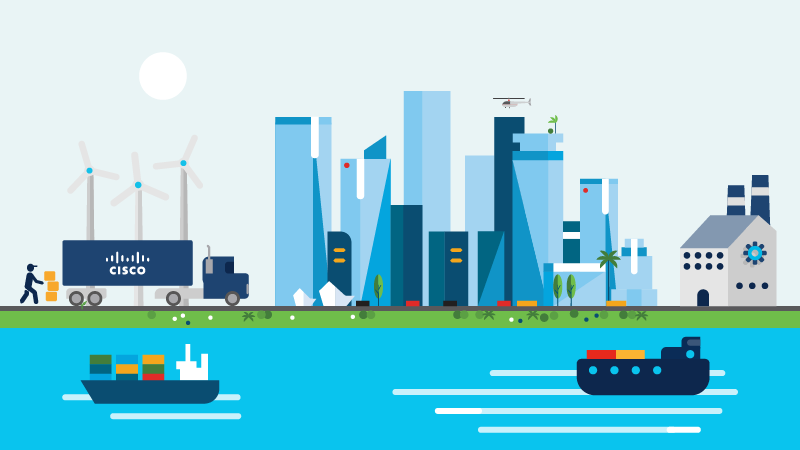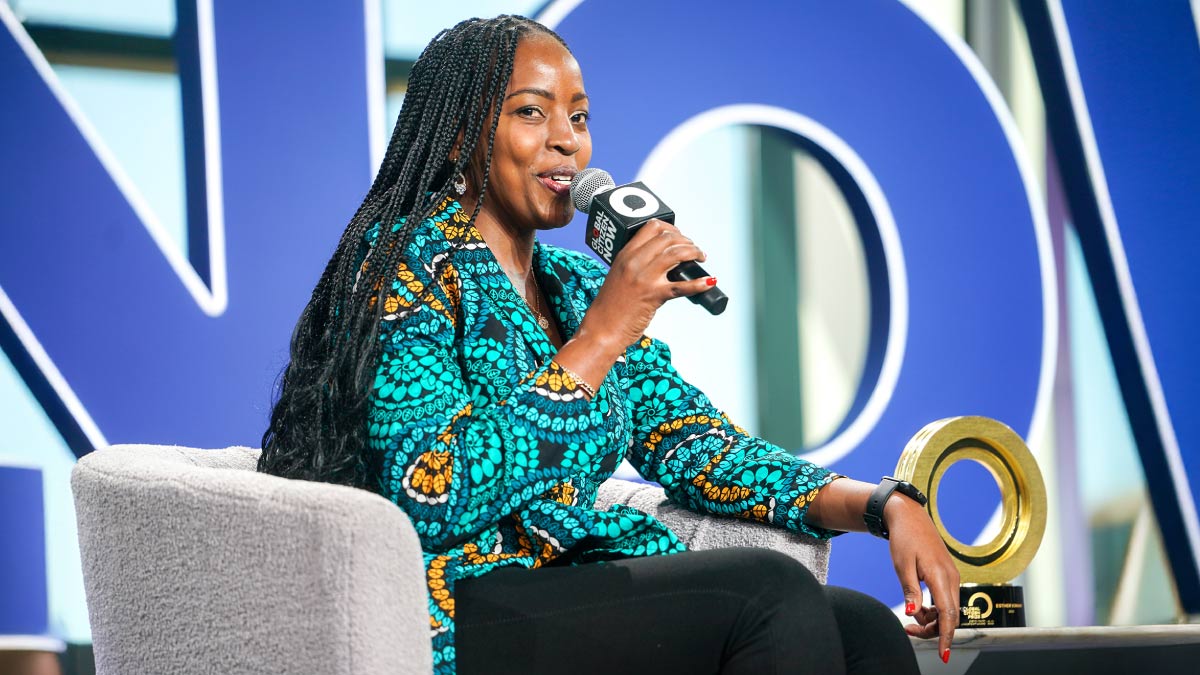In a uniquely challenging year, Cisco set new standards in innovation — and for its core purpose of powering an inclusive future for all.
This was especially true across the company’s vast global supply chain, where a staggering number of components, semi-finished goods, and finished products are moved and assembled with great efficiency, equity, and respect for the environment.
All of this factored in Gartner’s decision to name Cisco No. 1 in its Supply Chain Top 25 — for the second year in a row.
How did Cisco do it? And how does it plan to get even better?
John Kern, Cisco’s senior vice president for supply chain operations, shared some key insights on supply chain excellence:
Q. First off, congratulations, John. You and your teams won this honor in a year like no other. What were some of the biggest challenges that you faced this time around?
Coming off the tariff situation with China, then right into the COVID pandemic, and now the semiconductor/silicon crisis, it’s been a challenging few years as it relates to supply chains. It has taken an enormous amount of creativity and perseverance by our teams to find other ways to get the work done. It’s also been a huge priority to keep people safe during this pandemic, and we’ve shared best practices across partners and suppliers.
But to maintain the top spot two years in a row, we’re very proud of that. It’s great for our team and for Cisco to get the recognition.
Q. Agility and resilience have been critical through the pandemic. How did Cisco maintain those qualities across such a vast network of suppliers, partners, and manufacturers?
Supply chains typically are concerned with cost, efficiency, and driving productivity. But agility and resilience cost money. So, trying to maintain the happy medium between hitting the financial objectives, but also being able to respond to unexpected events like natural disasters, the pandemic, or the semiconductor crisis is a tricky balance.
We have a philosophy that we’re not all about driving the lowest possible cost. We’re about optimizing the network and creating a dynamic, distributed supply chain. In the last few years, we have definitely focused more on dual sourcing. And luckily we made heavy investments in Mexico, improving our resiliency, allowing us to deal with the tariff challenges more effectively.
Another factor in our resiliency is the partnerships that we’ve built with our suppliers over the decades. It’s less of a buyer-seller relationship — we’re more about strategic partnerships, where we want them to invest in technologies we need for the future, while fueling their future as well.
And of course, we have an awesome team that’s super creative.
See also: Cisco CFO on climate change: 'It starts with the way we manage our supply chain'
Q. Cisco is a technology leader, but also a leader in corporate social responsibility. How does the company leverage its moral leadership across supply chains, specifically in terms of human rights?
Cisco’s core purpose is to power an inclusive future for all. That’s something that resonates a lot with our supply chain team and in our extended network. The conditions under which our products are made really matters. We’ve done a number of things to drive that. We established an executive committee for human rights governance, which I chair. We hold all of our suppliers accountable for our code of conduct, which includes human rights and worker safety. And that was absolutely crucial during COVID because when you get under pressure around meeting production targets, some companies will cut corners.
Our expectations are very clear, but we also have the right governance in place to ensure that we are creating an inclusive environment, a sustainable environment, and that we’re protecting the teams that support us.
A greener supply chain
Cisco goals for supply chain excellence:
- Cut Cisco supply chain-related Scope 3 greenhouse gas emissions by 30 percent by FY30.
- Ensure that 80% of Cisco component, manufacturing, and logistics suppliers have a public absolute GHG emission reduction target by FY25.
- Reduce foam used in Cisco product packaging by 75% by FY25.
- Incorporate circular design principles into 100 percent of new Cisco products and packaging by 2025.
Q. Gartner called out environmental awareness and sustainability as key attributes. What differentiates Cisco in those areas? And what higher standards are we setting for the future?
One of things that enabled us to stand out as it relates to Gartner is our leadership in concepts like circular economy and driving that as a practice across the enterprise. It’s not just a supply chain activity. It’s an enterprise-wide mission, because the idea of driving an economy around extracting resources from the earth and then having that end up as waste is just fundamentally not sustainable.
And we’ve also shown leadership in the goals we’ve set. We set a goal many years ago around avoiding over a million metric tons of carbon emissions, and we hit that objective one year early, back in 2019. We’ve set aggressive targets around virgin plastic reduction, foam and paper elimination in our products, and the concept of zero-waste manufacturing.
We don’t put pie in the sky targets out there. They are based in science and we drive the operational discipline to make those targets a reality.
Q. Cisco is all about innovation. How have our innovations in networking, collaboration, security, IoT and other areas supported supply chains?
One of the things that I love about supply chain is we’re not just on the tail end of the manufacturing engine. We’re at the front end of that conversation with engineering. And we’ve done the upfront work years in advance to make that technology ready for use. We do tons of research in advanced silicon technology, packaging technology, optical technology, thermal and energy efficiencies, and we’ve made huge advancements in partnership with development engineering.
And then we use our own technology to drive better efficiencies in supply chain. We're very aggressive in shifting to a more digital supply chain, leveraging cloud technology, artificial intelligence, machine learning and IoT. And harnessing the value and embedding those technologies into many, many practices.
Q. How do you see that combination of innovation and leadership continuing to set standards for supply chain excellence in the future?
The next big area for us to tackle is to harness the full potential of all this great new technology, together with circular economy and sustainability — as we continue to build the future workforce and influence the industry, the standards, and the governing bodies. If we integrate all that we can really change the game.
Q. Thank you, John. I look forward to congratulating you on next year’s ranking.
Well, at the end of the day, the external recognition is great. But what our customers say is what really matters. It's been a challenging environment, and we’re extremely committed to meeting and exceeding our customer expectations.
For further reading:
- Reimagining the Global Supply Chain
- Environmental impact in Cisco’s supply chain
- 2020 corporate social responsibility impact report




